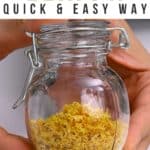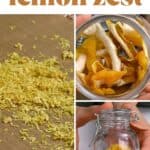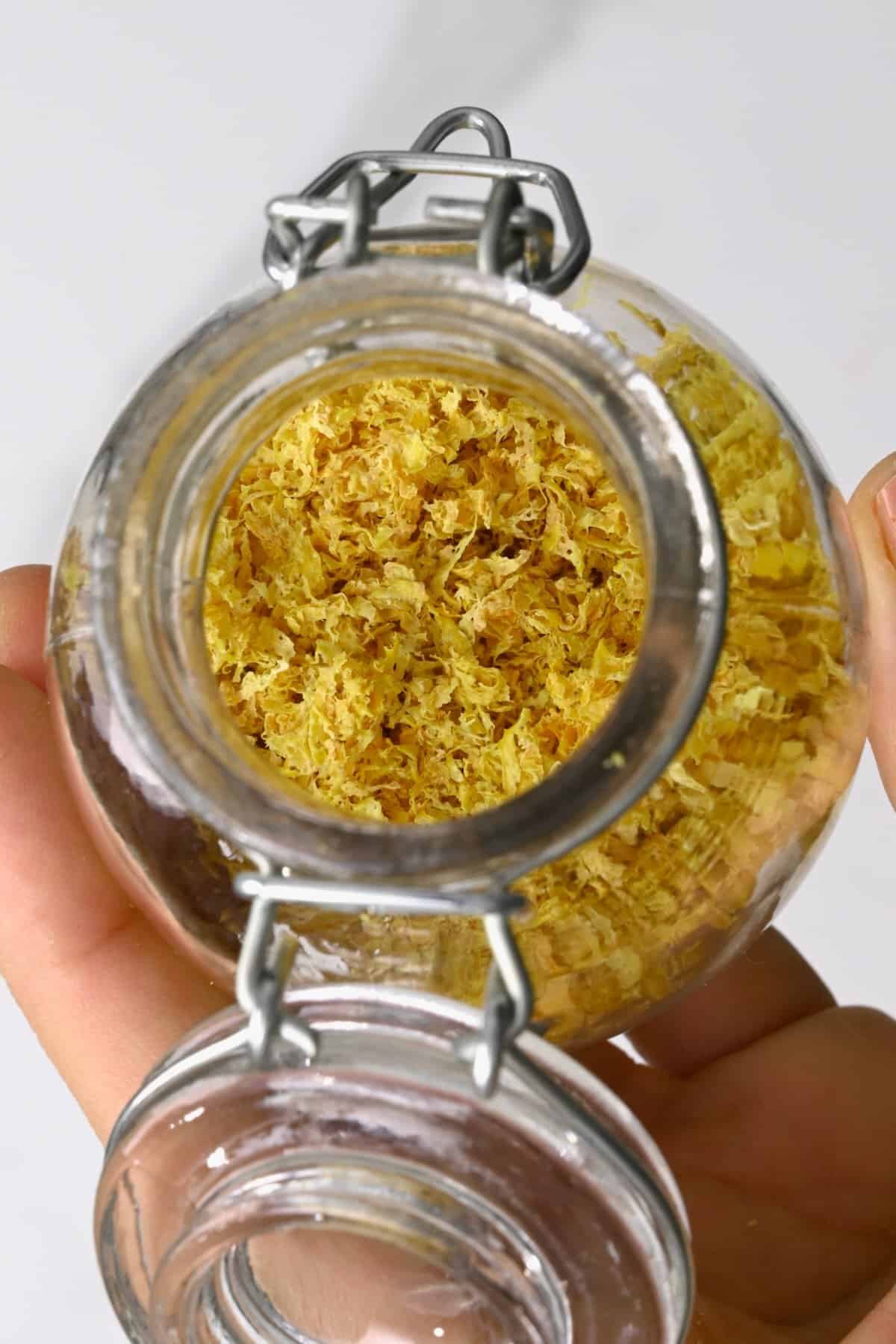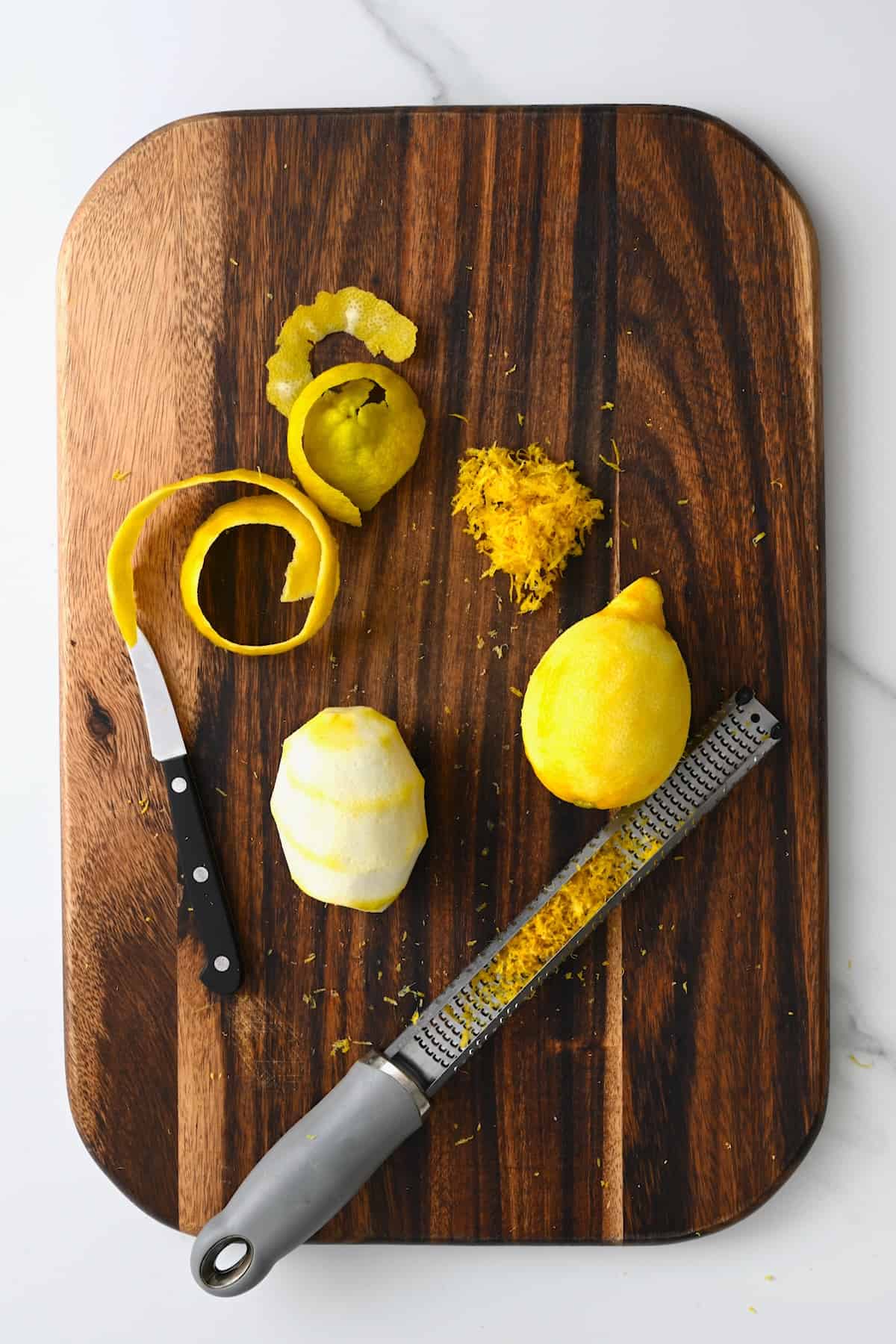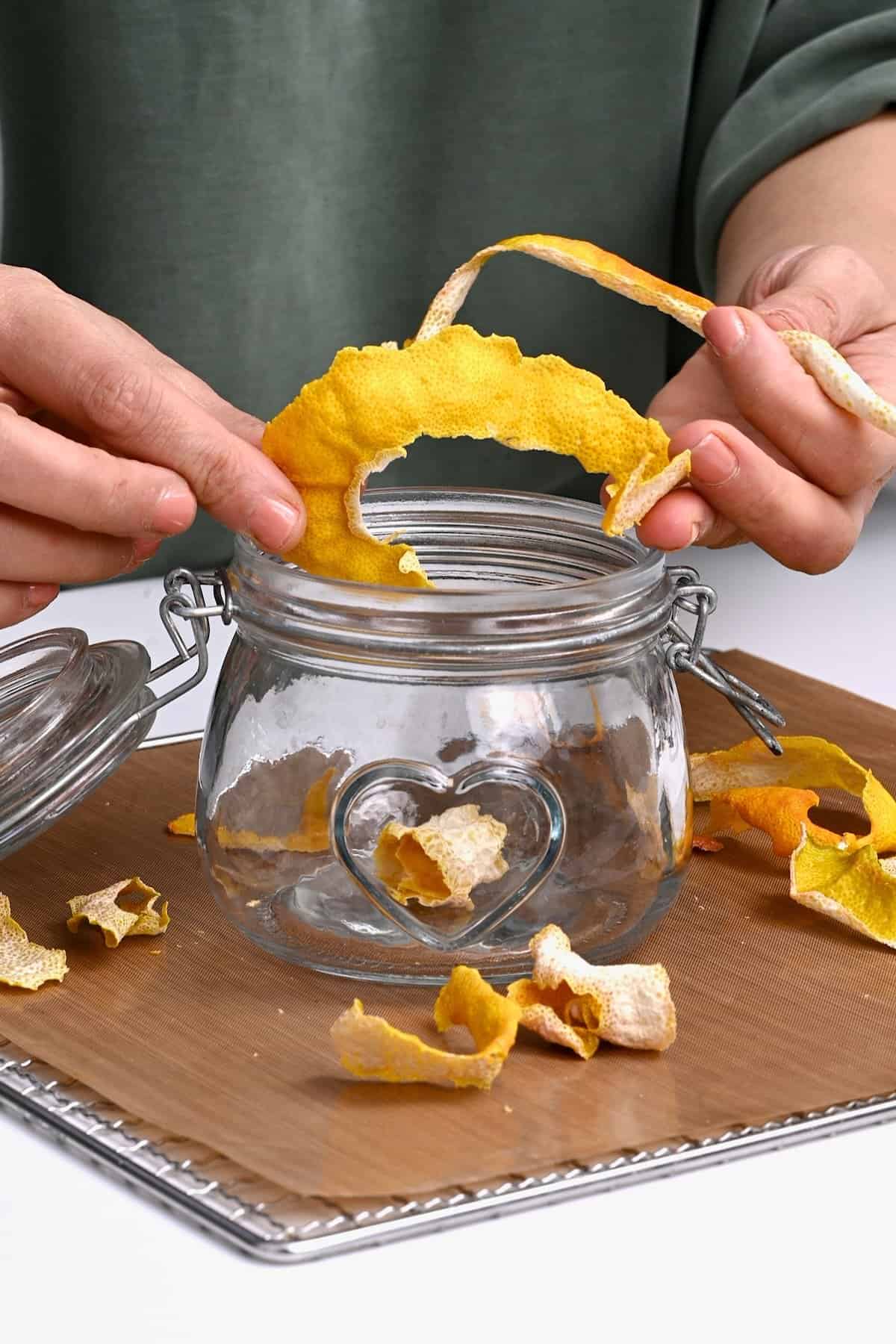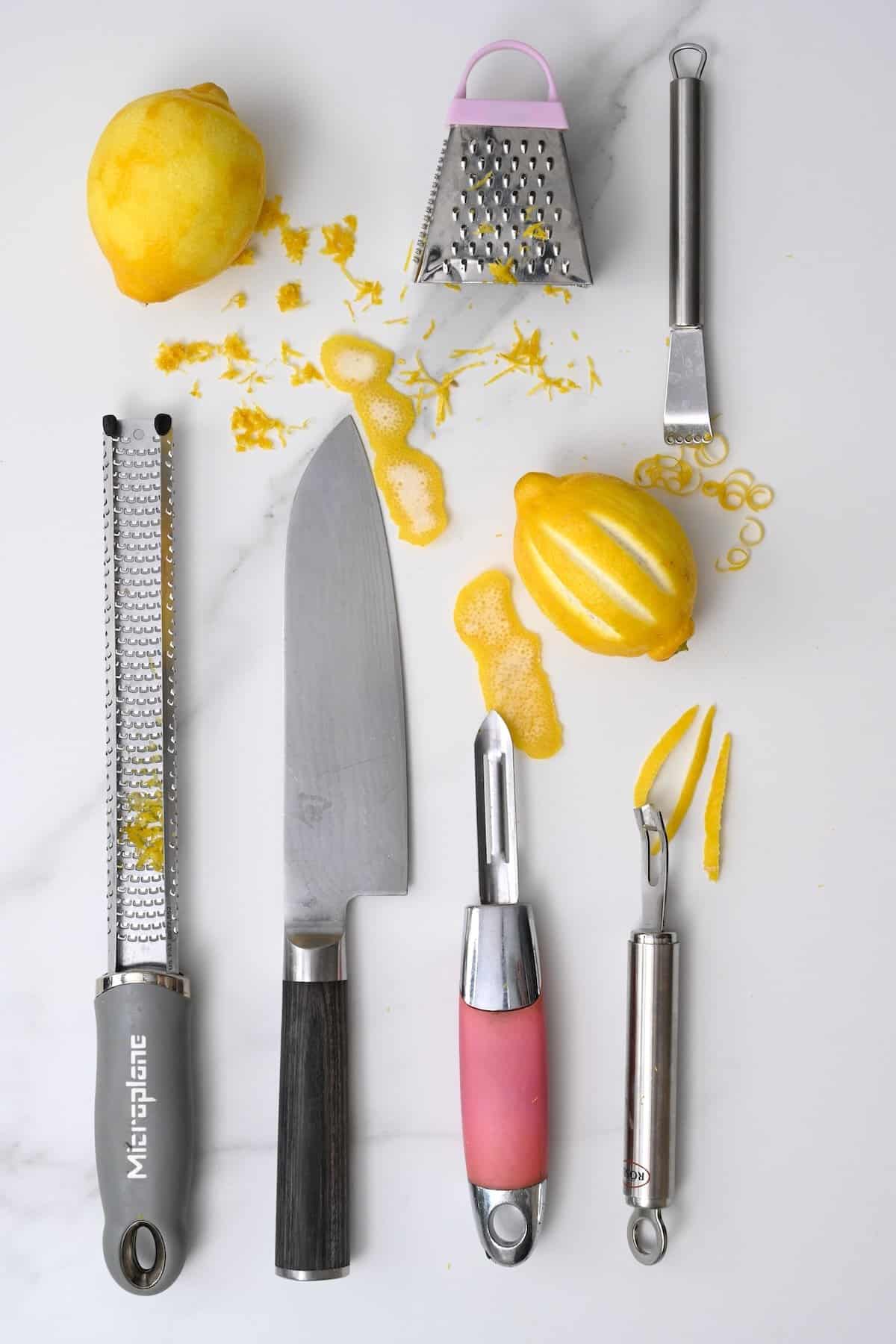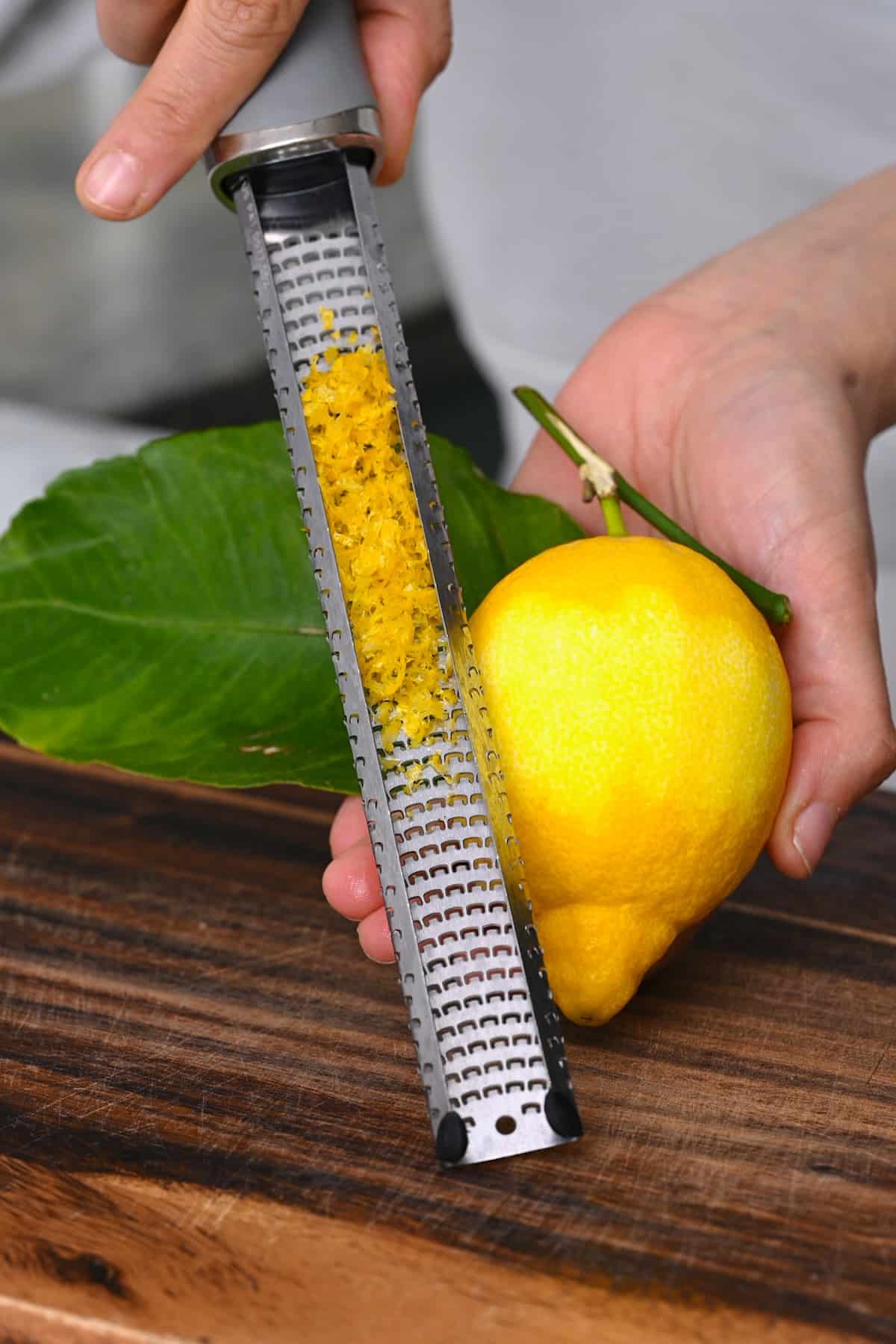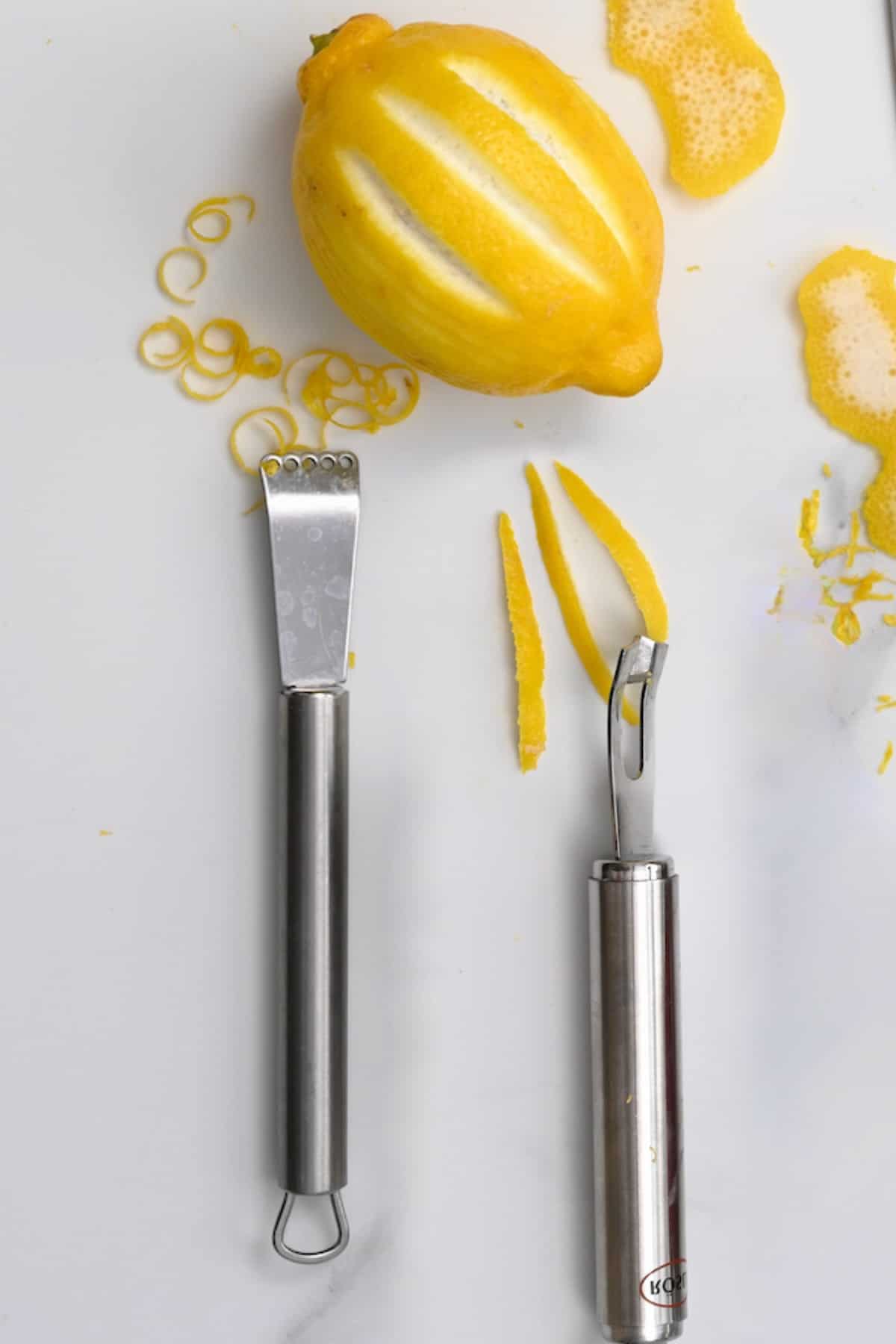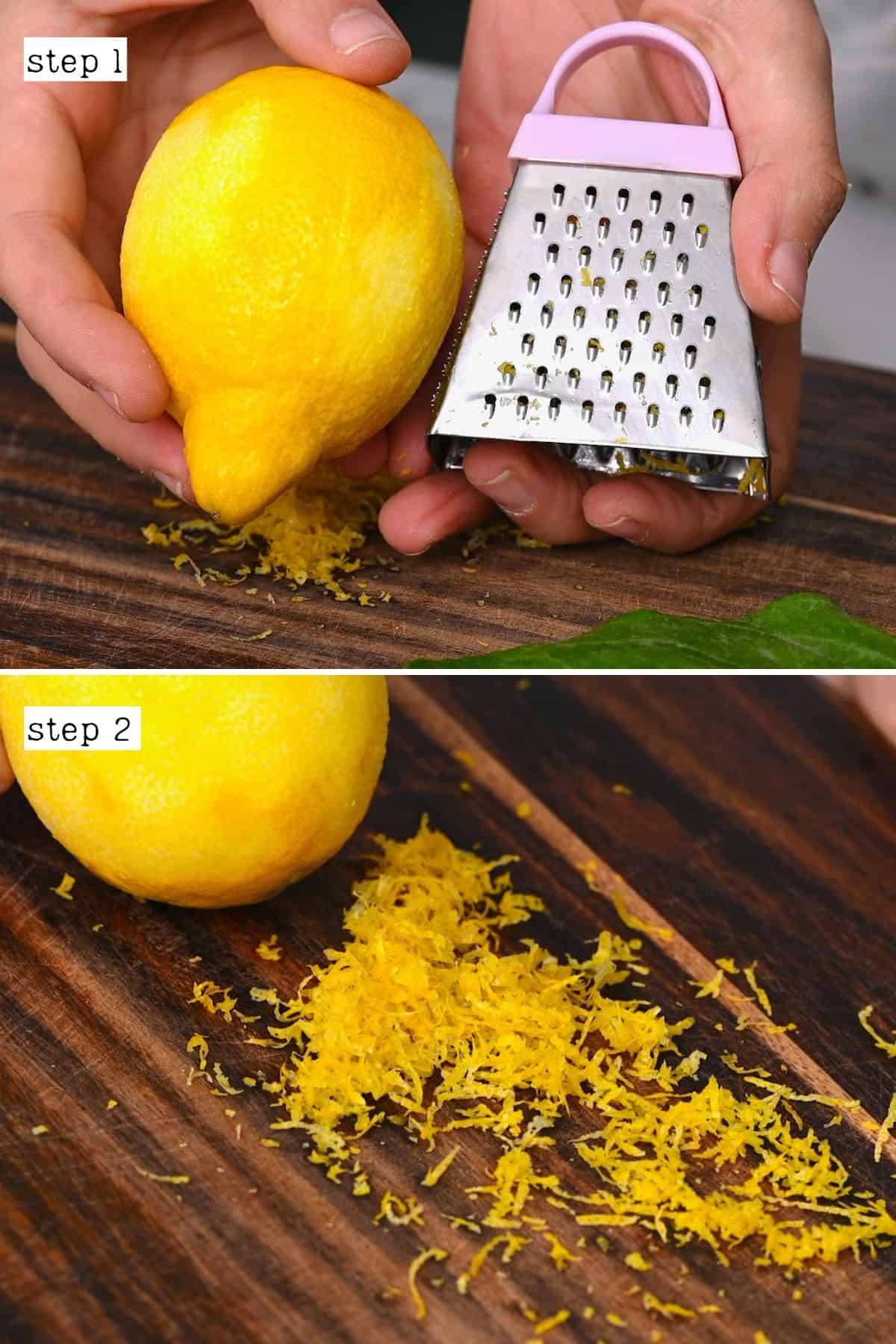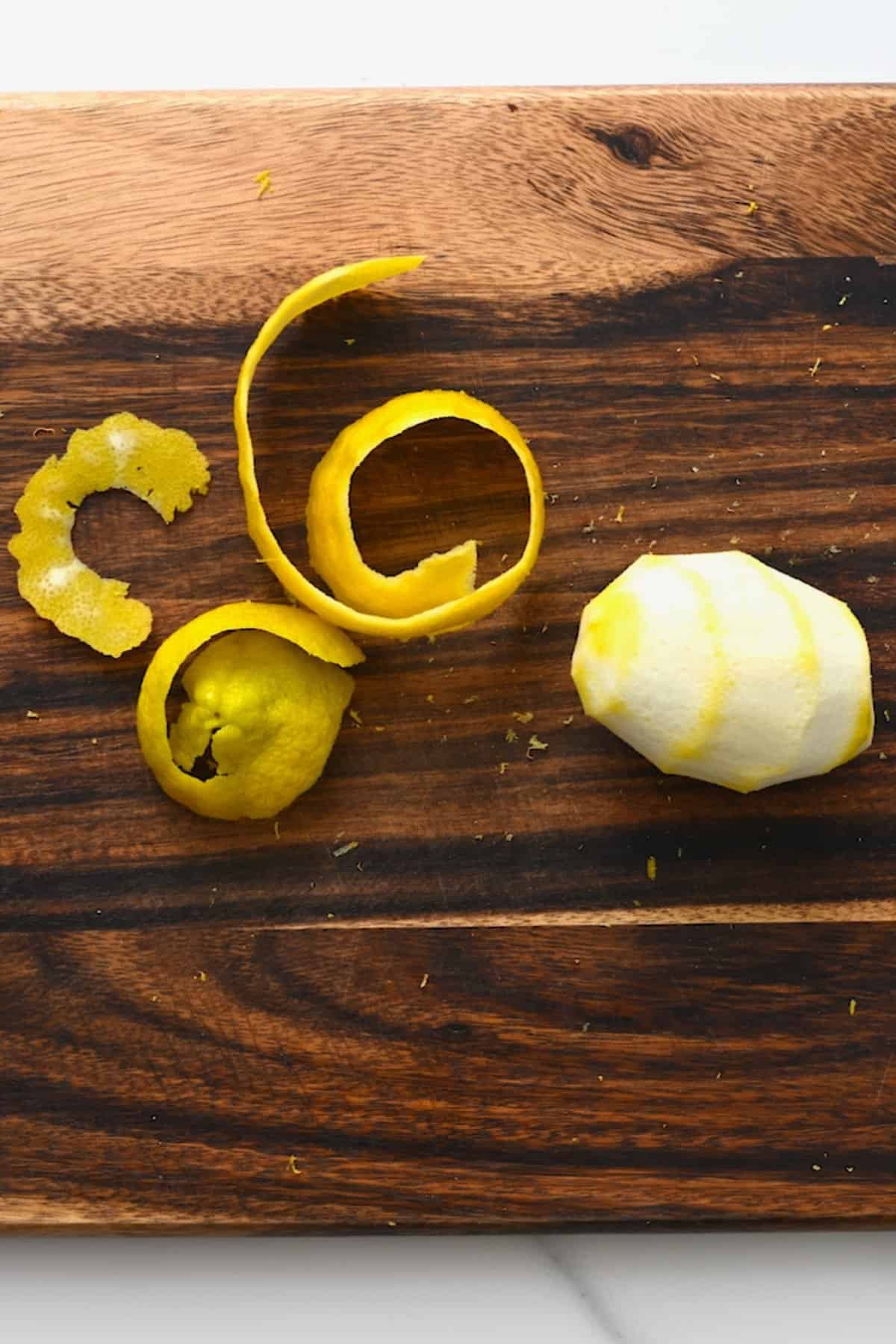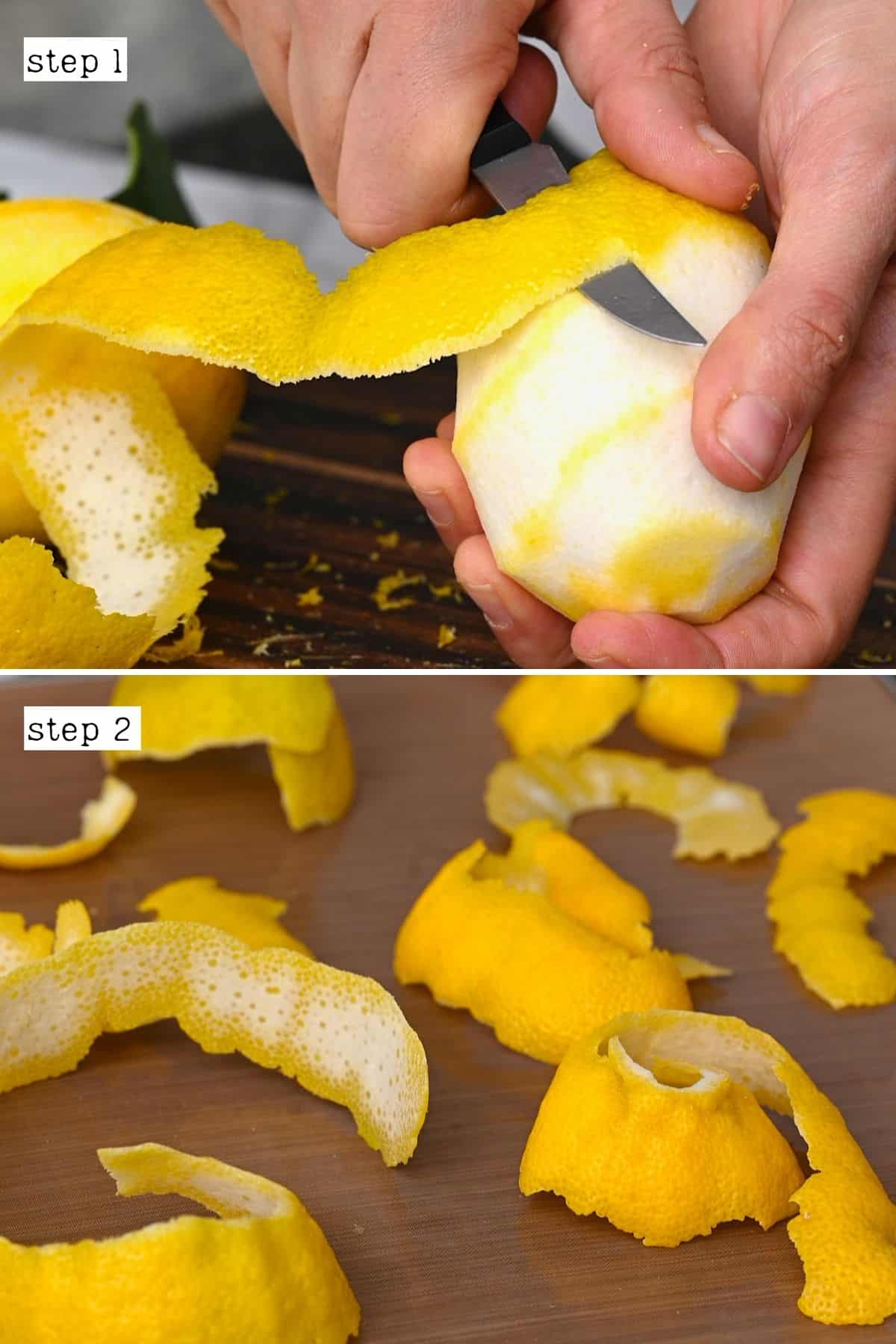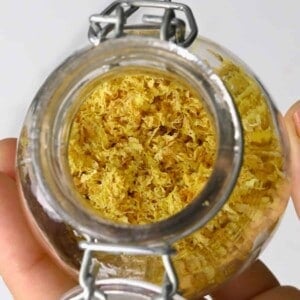I have shared my top 6 methods for juicing a lemon and having already prepared preserved lemons (also great if you’re a lemonade lover), I made sure to peel or zest all the remaining citrus. Not only does this help to reduce food waste, but there are so many ways to use this ingredient. While the most common methods are arguably how to make lemon zest with a microplane or citrus zester, below are three additional methods. That way, you can pick a tool based on the results you want and what you have in your kitchen. These include how to zest a lemon with a cheese grater, knife, and vegetable peeler! As a bonus, all of these methods double up as ways to zest limes, oranges, and other citrus fruit, too! Once zested, this zingy ingredient is perfect for boosting all sorts of recipes/meals, including dressings, salads, pasta dishes, and more. Plus, the methods below help you prepare zest, strands, and strips of the peel.
What is lemon zest
Lemon zest refers is the fragrant outermost layer of the lemon’s peel. By using one of the methods below, you can obtain lemon zest by removing the yellow portion of the peel (which contains the flavorful oils) while avoiding the bitter white pith. When incorporated into different dishes, desserts, and beverages, lemon zest adds an intense fresh citrus aroma and tangy taste.
What’s needed
Lemons: when you plan to consume the zest, it’s best to use organic, unwaxed fresh lemon (to avoid pesticides and other nasties). If they’re waxed, you’ll need to first remove that layer. The tools (choose one): Microplane, Lemon zester, Cheese grater (box grater), Vegetable peeler (potato peeler), A sharp paring knife.
Depending on which tool you use, you end up with different results. I.e., a microplane and box grater yield a finely grated zest. Meanwhile, a citrus zester will create long strands/curls. Lastly, a peeler or knife will create long strips/pieces of the peel that can be twisted or chopped down.
How to remove wax from lemons
It’s best to first remove the wax layer surrounding the lemons (which is used as a preservative). While, technically, it’s safe to eat, it can cause some mild digestive discomfort. Alternatively, you could dip the lemons into a large bowl of very hot water for a few seconds OR even use some vinegar or lemon juice to wipe them, then rinse them.
How to zest lemons with and without a zester
Even if the citrus is unwaxed, it’s still a good idea to start all of the methods below by rinsing the fruits well, removing any stickers, and patting them dry. Chef’s Tips: the biggest tip of all for how to make lemon zest the best way possible is to remove the yellow part of the peel ONLY and not the spongy, bitter white part, aka the pith!
Using a Microplane
This is one of my favorite methods for cleanly zesting the peel away from the pith. Plus, it’s super simple to do, too (and as a bonus, it works well for ginger, garlic, cheese, and chocolate, too). This method will also work with a hand-held grater, though not quite as “cleanly.” Be careful while doing so to avoid accidentally zesting your finger skin! If you then want to remove the pit before using the lemon, use a sharp paring knife.
With a Citrus Zester
While this method is equally as simple as the above, the results differ – which is why you may decide this is/isn’t the one for you. A citrus zester has several small holes and will yield long strands of peel rather than the very finely grated results, perfect for decorating/garnish and in cocktails. Here’s how:
With a Box Grater (Cheese Grater)
Zesting a lemon with a cheese grater is incredibly simple. Plus, many of us already have this tool in our kitchens, making it an excellent option for finely grated results. To help release the citrus zest that gets stuck in the grater, just tap it against the countertop to loosen it.
With a Vegetable Peeler (Potato Peeler)
This method is simple but will create strips of peel (perfect for lemon twists) rather than traditional zest, and you don’t have as much control over how deep into the fruit you peel (so may end up with pith, too). In terms of safety, it’s best to hold the sides of the fruit and peel it away from you to avoid accidentally peeling any skin (which is double ouch when dealing with acidic ingredients!). If the peeler gets stuck at all, you can shimmy it side to side to help it cut through the peel.
With a Knife
This version is usually my last option as it creates strips of lemon peel rather than just the zest and takes longer to remove only the yellow part rather than the entire rind.
How to Use Lemon Zest?
Here are some of my favorite recipes and ways to use lemon zest:
Mix into lemon bakes like cakes, Swiss rolls, quickbreads like this blueberry lemon loaf, cookies, lemon cupcakes, etc. Use in the crust of tarts/pies. OR use it as decoration for the baked goods. Add to lemon frosting or glaze. Use to make lemon butter (and add to other compound butter). Stir into vinaigrettes/dressings and marinades. Add to easy lemon pasta. Sprinkle over roasted greens like green beans, sprouts, or broccoli. Mix it into salt or sugar. Sprinkle into salads. Mix into fresh basil pesto. Stir into soups. Add to crumbles and crisps. Use in jam and marmalades. Add to tea and other soothing drinks. Candy the lemon strands/peel.
You could also dehydrate the peel/zest. Then add it to tea, lemon pepper seasoning, crush into a powder, and more!
How to store lemon zest
Freshly grated lemon zest is best. Avoid refrigerating it, as it dries out and loses its natural oils, affecting its quality (though it could last 1-2 weeks in the fridge). Freeze the zest by putting it in an airtight container. Or first place in an ice-cube tray and then transfer it to a container once frozen. Label and freeze for up to 6 months. Thaw for a few minutes at room temperature before use.
For longer storage:
Dry the zest on a lined sheet or in a dehydrator/oven at 100ºF/38ºC until brittle. Store the dried zest in an airtight container or spice jar for up to a year. Use 1 tsp dried zest for every 1 Tbsp fresh zest in recipes.
More lemon DIYs
How to Juice a Lemon (6 Ways) Easy lemon butter (+ flavor variations) The BEST homemade lemonade Honey-fermented ginger and lemon Lemon Simple Syrup
You might also be interested in How to Juice a Lime (6 Methods)! If you try one of these methods for making lemon zest, let me know how it goes in the comments below. I’d appreciate a recipe card rating and would love to see your recipe recreations – tag me on Instagram @Alphafoodie!
